Cybersecurity in Financial Services
09 Nov, 20237The cybersecurity of banking is growing increasingly important as we move toward a digital e...

The cybersecurity of banking is growing increasingly important as we move toward a digital economy.
Financial services companies are facing an unprecedented level of cyber threats, and these threats are constantly evolving and adapting. For the digital revolution to be effective, it is crucial to use the techniques and policies developed to protect the data. Whether it's an unintended breach or a well-thought-out hack, the security of our Personally Identifiable Information (PII) depends on how successfully banks' cybersecurity is implemented.
Since enormous financial quantities are at risk and there is a chance of considerable economic upheaval if banks and other financial systems are compromised, the stakes are high in the banking and financial industry. There is a lot of need for cybersecurity professionals due to the exponential rise in financial cybersecurity.
It’s essential to protecting sensitive customer data, ensuring the integrity of financial services transactions and maintaining the trust of customers. It is a necessity for financial services organisations to implement strong security measures to protect their networks and data from malicious attacks.
What Does Banking Cybersecurity Entail?
The "cybersecurity" set-up of technologies, protocols, and procedures is designed to protect against intrusions, damage, viruses, malware, hacking, data theft, and unauthorized access to networks, devices, programs, and data.
The main objective of cybersecurity in the banking industry is to protect the user's assets. There are more online acts and transactions as more individuals go cashless. People make purchases using electronic payment methods like debit and credit cards, which require cybersecurity protection.
Why the Financial Industry is a Prime Target for Cyber Attacks
The financial industry has always been a prime target for cyberattacks and there are several reasons why this is the case. Firstly, it deals with vast amounts of valuable data, making it an attractive target for cybercriminals. From personal and financial information to trade secrets. Financial institutions possess a treasure trove of data that can be monetised or leveraged for malicious purposes.
This industry is heavily reliant on digital systems and networks to carry out its operations. Online banking, electronic payments and high-frequency trading are just a few examples of the critical functions that the industry performs in a digital environment. This reliance on technology creates numerous entry points for cybercriminals to exploit, from vulnerable software and outdated systems to weak passwords and unpatched security flaws.
Common Cyber Threats Facing the Industry
In the fast-paced world of finance, the threats posed by cyber criminals are numerous and constantly evolving.
Phishing Attacks
One of the most prevalent cyber threats facing the industry is phishing attacks. These attacks involve sending deceptive emails or messages that trick individuals into divulging sensitive information such as login credentials or financial details. Phishing attacks have become increasingly sophisticated, with cyber criminals using tactics like spear phishing to specifically target high-ranking individuals within financial institutions.
Malware
Malicious software can be deployed through various channels, such as infected email attachments or compromised websites, to gain unauthorised access to networks and steal sensitive data.
Financial institutions are also vulnerable to Distributed Denial of Service (DDoS) attacks, which aim to overwhelm networks and systems, causing service disruptions and rendering them temporarily unavailable. These attacks can result in significant financial losses and damage to a company's reputation.
To combat these cyber threats, financial establishments need to invest in robust cybersecurity measures. This includes implementing multi-layered security solutions, regularly updating software and systems, conducting employee training on cybersecurity best practices also employing cybersecurity engineers to monitor and respond to potential threats. Additionally, adopting a zero-trust approach, where all users and devices are considered untrusted until verified, can help mitigate the risk of unauthorised access.
Trojans
The term "Trojan" refers to a number of risky strategies hackers use to trick their way into secure data. A banker cannot use it unless it is installed on a computer. Trojan software appears to be reliable. But it's a malicious computer program designed to gain access to sensitive information processed or stored by online banking services. A backdoor in this type of computer program makes it possible to access a computer from the outside.
Ransomware
Important data is encrypted by the cyber threat known as ransomware, which prohibits owners from accessing it unless they pay a hefty fee or ransom. Ransomware is a serious threat to banking institutions because 90% of them have experienced it in the last year.
Ransomware affects Bitcoin in addition to posing a risk to financial cybersecurity. Cryptocurrencies' decentralized design makes it possible for scammers to hack trading platforms and steal money.
Spoofing
In this sort of cyberattack, hackers utilize a clone site. They; by pretending to be a financial website;
• Create a layout that, in terms of both design and functionality, is similar to the original.
• Create a domain by making a minor spelling or domain extension change.
• Through a third-party communications service, such as text messaging or email, the user can access this counterfeit website. When a user is not paying attention, hackers can obtain their login credentials. Many of these problems can be resolved with seamless multi-factor authentication.
Challenges in Enforcing Cybersecurity Measures within the Banking Sector
Several contributing factors have posed significant hurdles to the implementation of robust cybersecurity measures in the banking industry. Here are some of these key challenges:
Limited Cybersecurity Awareness
There exists a notable deficit in public awareness regarding cybersecurity, and only a handful of businesses have invested significantly in addressing this gap.
Insufficient Budgets and Inadequate Management Focus
Cybersecurity often suffers from inadequate budget allocation, as it is not accorded the high priority it deserves. Top-level management tends to underemphasize the significance of cybersecurity risks.
Inadequate Identity and Access Management
Effective cybersecurity relies heavily on robust identity and access management. With hackers gaining control and accessing business networks through compromised logins, there is still much progress to be made in this area.
Escalating Ransomware Threats
The increasing prevalence of ransomware attacks has garnered attention. Cybercriminals employ various tactics to evade detection by endpoint protection systems that primarily target executable files.
Proliferation of Smartphones and Apps
Banking institutions increasingly conduct transactions via mobile devices, making them an attractive target for exploiters. As the user base of mobile banking continues to expand, so does the potential risk for hackers.
Impact of Social Media
The rise of social media has provided hackers with additional avenues for exploitation. Less-informed users often expose their personal data publicly, which attackers can exploit to their advantage.
Best Practices for Effective Cybersecurity
Effective cybersecurity measures are crucial for financial organisations to protect their networks, data, and customers from ever-increasing cyber threats. To ensure a strong and robust cybersecurity framework, there are several best practices that these organisations should consider.
Adopt a Proactive Approach
This means continuously monitoring and assessing their systems and networks for vulnerabilities, as well as regularly updating their security measures. Staying up to date with the latest patches, software updates and security protocols is essential in mitigating the risk of cyber-attacks.
Understand that cybersecurity policies and procedures are not one-size-fits-all. They should be customised to align with the specific needs, risk profile, and operations of your financial institution. Consider factors like the types of services you offer, the size of your organisation, and the regulatory requirements you must adhere to.
Regular Employee Training
Conduct ongoing cybersecurity awareness training for all staff members.
Employees are often the weakest link in the security chain, as cyber criminals frequently use social techniques to exploit vulnerabilities. Training staff to recognise phishing attempts, avoid suspicious links, attachments and use strong passwords, financial institutions can significantly reduce the risk of the human element as a vulnerability.
Regular Security Audits and Vulnerability Assessments
To find gaps and vulnerabilities in your systems, perform routine security audits and penetration tests. Resolve issues that are discovered quickly. This is critical in identifying and addressing potential weaknesses in the cybersecurity infrastructure. These assessments can help organisations identify vulnerabilities, prioritise security measures and continuously improve their defences against cyber threats.
Develop Incident Report Plan
Develop and test a robust incident response plan to ensure a swift and organised response to cybersecurity incidents. Define roles, responsibilities, and communication protocols for your incident response team.
Network Security
Use strong network security measures, such as firewalls, intrusion detection systems (IDS), and intrusion prevention systems (IPS), to protect your network. Watch the network traffic constantly for strange patterns.
Data Backups and Recovery
Put in place a thorough data backup and recovery strategy. To guarantee business continuity in the event of a cyber disaster, regularly back up important data and verify the restoration procedure.
Outsourcing certain aspects of cybersecurity
This can alleviate some of the burden on internal IT teams and provide additional layers of protection.
By implementing these best practices, companies can enhance their cybersecurity posture and better protect their networks, data and customers from cyber threats. In today's digital landscape, robust cybersecurity is not just a necessity; it is a competitive advantage that builds trust, safeguards valuable assets, and ensures the long-term success of institutions.
Future Technology which can add to Cyber Security
Emerging technologies are playing a crucial role in bolstering cybersecurity in the financial industry. As cyber threats continue to evolve and become more sophisticated, financial institutions are / should be turning to innovative technologies to strengthen their defences.
Artificial Intelligence
AI can analyse vast amounts of data in real time and identify patterns that may indicate a potential cyber-attack. By learning algorithms, AI can learn from past attacks and adapt its defense to anticipate and neutralise future threats. This proactive approach allows organisations to detect and respond to cyber-attacks more quickly, minimising the damage and reducing the risk of data breaches.
Blockchain technology
This is another emerging technology that has the potential to enhance cybersecurity in the financial industry. Blockchain is a decentralised and transparent ledger system that records transactions across multiple computers. Its unchanging, cryptographic security make it a highly secure way to store and transmit sensitive financial information. By leveraging blockchain technology, financial institutions can protect against unauthorised access, tampering and data manipulation.
AI in addition to blockchain are just a couple of examples of innovative technologies that financial institutes are adopting to enhance their defences against cyber threats. By leveraging these technologies, financial services organisations can better protect their networks, data and customers from malicious attacks, ensuring the security and integrity of the financial industry.
To Conclude
The culmination of previous, present, and emerging technologies, a well-educated workforce on the dangers of cyber threats, and a well-equipped, well-run Cyber security and Network Security team. The risk will be reduced but not zero. So, evolving with the times, improving security measures, continuous training, consistent audits, and vulnerability tests, are paramount for any business.
Looking to improve your cyber security structure within your business but not sure where to start? Get in contact with one of our specialised consultants and get your security team hired today! We can ensure an A-list of candidates and a cooperative and extensive relationship with both clients and candidates.









